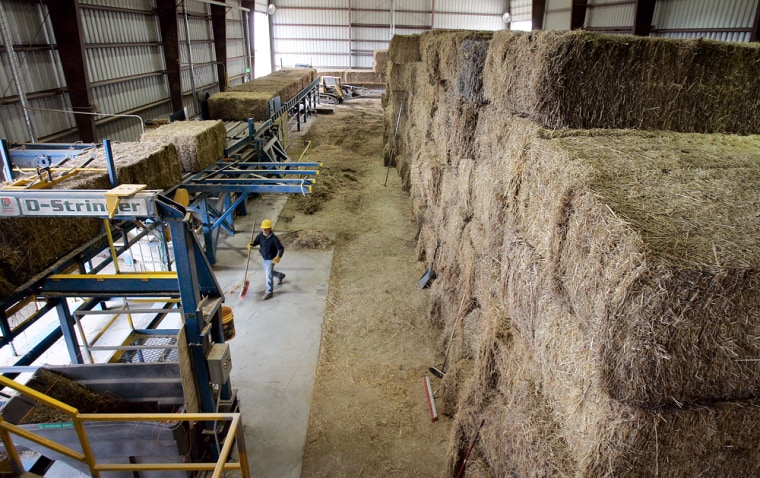A common grass that needs no fertilizer and grows up to 7 feet tall could provide Maryland farmers with a cheap source of fuel, a university researcher says.
Switchgrass, scientific name Panicum virgatum, is a dense, tasseled grass that grows easily in Maryland. Used mostly as a buffer or for ground cover, University of Maryland biosystems engineer Ken Staver says switchgrass could be an energy boon for state farmers.
Staver has installed a straw-burning boiler at the university's Wye Research and Education Center, where he burns switchgrass to save 700 to 800 gallons of fuel oil each winter -- worth $1,700 to $2,000.
The engineer thinks switchgrass could easily be used by farmers as supplemental fuel. Staver said a 4-acre plot could provide $4,900 worth of fuel.
"If energy prices go up, all of a sudden you don't have to think of it strictly as a buffer," Staver told The (Baltimore) Sun. "It has economic value."
Staver isn't the only one taking a new look at the grass common to American prairies. President Bush mentioned it in his 2006 State of the Union address and included switchgrass-to-energy research in his $289 million Advanced Energy Initiative.
Switchgrass converts and stores more solar energy per acre than any of the grain crops being used to produce ethanol for fuel, according to Canadian researchers. It holds 66 percent more potential energy than corn, the most efficient agricultural source of ethanol, according to Roger Conway, director of energy policy at the U.S. Department of Agriculture.
Some scientists are working to turn switchgrass into ethanol fuel. Staver has a simpler idea -- just cut it and burn it.
"If you go to the Department of Energy Web page ... it's all about 'reprocessing this, and making that,'" he said. "People are sure that anything this simple can't be useful. ... It's frustrating to me they don't give more support on these kinds of issues."
Switchgrass grows in poor soils, doesn't need fertilizer and grows thick enough to crowd out competitors. And it's a perennial grass, so it doesn't have to be replanted every year.
"The only trip across the field every year is to harvest it," he said. "It's easy to establish and it produces a lot of biomass."
Farmers already can be paid by the federal government to grow switchgrass for erosion control. Staver supports a change in federal Conservation Reserve Program rules to allow farmers to harvest the buffer grass as a biofuel crop.
"It would give them an economic reason to think about buffers," he said.
Staver cuts and bales the switchgrass each April. He stores the 500 to 600 bales in a long shed, waiting for cold weather.
Staver then burns the switchgrass in a burner topped by a heat exchanger. About half the heat from the burning grass is captured, then heated water is pumped through underground pipes to deliver heat. Each bale produces heat equivalent to more than 2 gallons of fuel oil.
Used full time to heat an average farmhouse, a burner would have to be stoked twice a day. Ash from the boiler -- about 1 percent of the fuel's original mass -- is returned to the soil.
It may not be advanced technology, but Staver sees potential in his switchgrass and his grass-fed boiler.
"There is some value to having something that works," he said.
